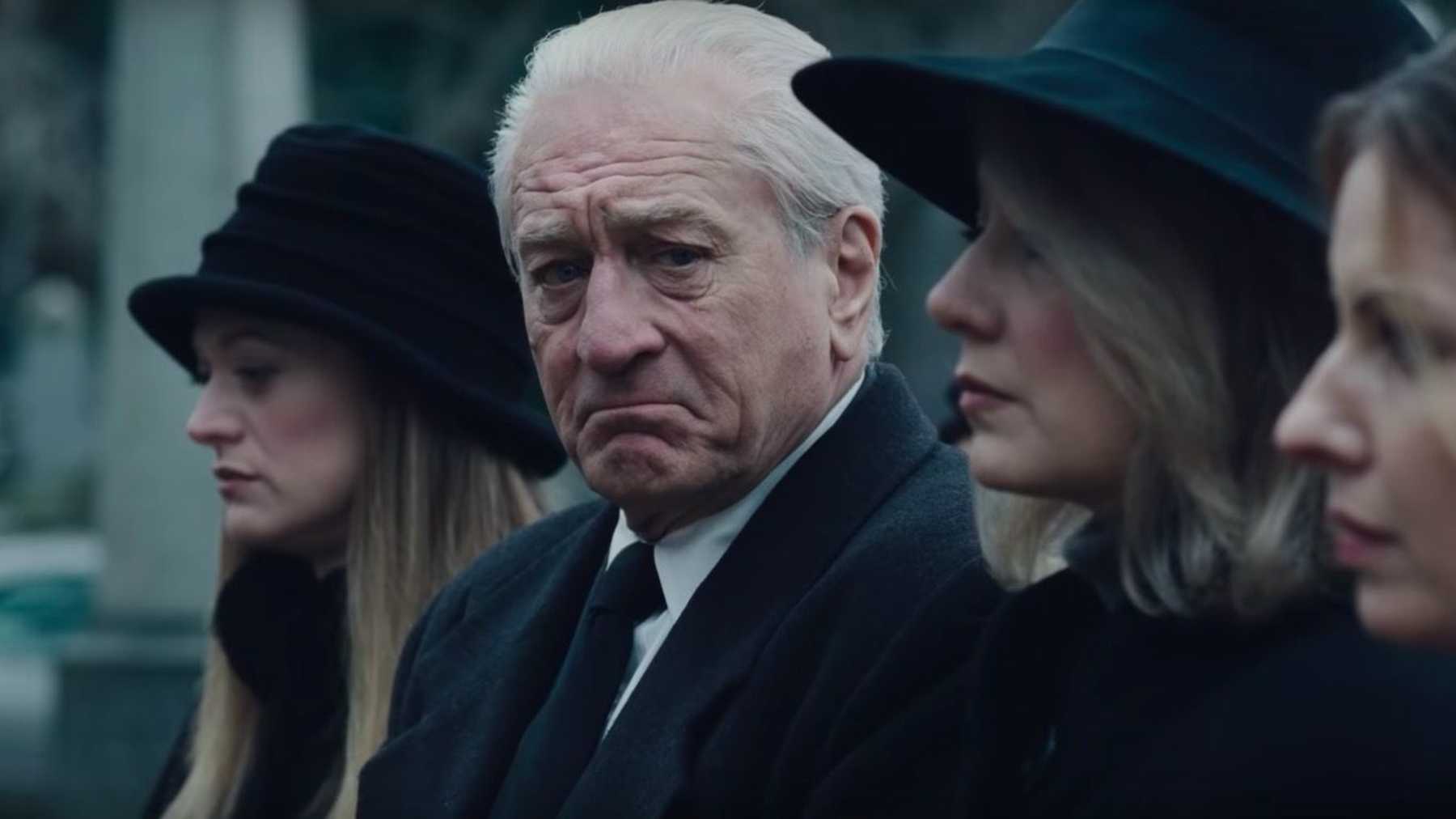I saw The Irishman at one of the satellite screenings that the BFI has tended to organise for the closing film. I didn’t come up lucky in either of the draws for the opening or closing films – perhaps because the Odeon Leicester Square – or Luxe – is now so luxury, that there are far fewer seats than there used to be, many of them controllable by motor to become something akin to the flat bed on a first class flight!
That said, the Everyman Barnet is no slouch in the luxury stakes, with the seats being in ones and twos, and more like armchairs. Plus, they’d given everyone free water and popcorn for this screening.
The Irishman is a return to the gangster film for Martin Scorcese, telling the true (?) life story of Frank Sheeran (Robert De Niro), the “Irishman” of the title, at one time a truck driver, but becoming a mob hitman, and through connections with Russell Bufalino (Joe Pesci – coming out of retirement for this role), becoming a close associate of Jimmy Hoffa (Al Pacino), head of the Teamsters union, and the man who controlled their massive pension fund.
One of the things that this pension fund was used for was the build casinos in Las Vegas, something that’s referred to here, and in some ways is the jumping off point for Scorcese’s 1995 film Casino.
Like Casino and Goodfellas, Scorcese uses the voice-over as an efficient method to provide us with context and backstory. He knows he has to tell us who Jimmy Hoffa was, so the exposition comes through voice over rather than through clunky scenes. Because, while this is a long film (just short of three and a half hours), it still zips along.
We start at the end, with De Niro’s Sheehan in some kind of old people’s home, sitting in a wheelchair, and telling us his story. The Irishman is based on a book, I Heard You Paint Houses (terminology meant to suggest that you carry out hits) by Charles Brandt. It’s worth noting that some have questioned the veracity of Sheehan’s tale, but let’s go along with it for now.
A chance meeting with mob-boss Bufalino sees Sheehan’s driver first begin to skim off the top of his beef cargo, before getting ever more involved in mob activities. Eventually Bufalino sends him the way of Hoffa, someone who needs a close aide to help keep things in check. Hoffa runs the Teamsters like a dictatorship, taking proactive methods to stop others rising too much to challenge him, including Anthony Provenzano (Stephen Graham).
Against all of this, is the rise of the Kennedys, who Hoffa and the mob, believe that they have in their pocket, although Hoffa has given money to Nixon which doesn’t help matters. And, when Robert Kennedy (Jack Huston) makes life hard for Hoffa, he believes he’s been stabbed in the back. Hoffa is running out of control and bosses like Bufalino are worried.
The film spans sixty years, and a lot of the coverage of this film has concentrated on the digital de-ageing that has been achieved here. The technique is sophisticated and works well. Only when they’re very young do you not really buy the effects, but as they reach middle-age, it’s much more subtle and less noticeable. By the end of the film, they’ve actually aged up everyone, probably just using make-up techniques.
As always with a Scorcese film, the soundtrack is important, with a range of easy listening classics helping us with our timelines – we rarely get captions, beyond some freeze frames highlighting a secondary character, and mostly telling us about their violent death in the late seventies or early eighties. Glamourous though the lifestyle might be, they all seemed to end up either dead or in prison.
The film looks it’s reported $160m cost, seeming to use every fifties and sixties car that’s still on the road. It’s not as showy as a film like Casino or Once Upon a Time in Hollywood in that the setting is more suburban than anything. But it feels real.
De Niro’s Sheehan is the heart of the film, but this is very much a three-hander with Pesci’s Bufalino being the schemer, while Pacino’s Hoffa is vulnerable and going off the wall at every moment. There’s a great scene where Hoffa is yelling at his lieutenants, and Sheehan is standing at the back of the room. Sheehan doesn’t appreciate being shouted at, and walks out, only for Hoffa to chase after him and explain that he hadn’t been shouting at Sheehan – just everyone else!
This is a mostly male film – the female characters being very secondary wives and daughters, although Anna Pacquin’s Peggy Sheerhan becomes very important despite having few lines at all. She’s the woman who sees Frank for what he really is.
It’s also notable, and probably quite deliberate, that just about the first person of colour we see is an orderly who helps Sheehan out in his old age.
I enjoyed The Irishman a lot. I’m not sure it has quite the gusto of Casino or Goodfellas, but obviously there’s a joy in seeing Scorcese working with De Niro, Pacino and Pesci together, something we’ve previously been denied.
Note: Having seen this film, I thought it would be nice to re-watch Casino and Goodfellas. Goodfellas is widely available. It’s on Netflix, and you can rent or buy it from all the usual digital outlets including Amazon and Google Play Movies. You can also get it on DVD and Blu Ray.
Casino, on the other hand, is a completely different case. It’s not on Netflix. It’s not on Amazon Prime. You can’t buy it on Google Play Movies or iTunes either. On disc, you can get a 4K + Blu Ray bundle for £20 from Amazon. But a Blu Ray on its own is only available from third party sellers.
The only place I could actually find Casino at an affordable price was on the UKTV Player, because Dave has recently broadcast the film!
Quite why Universal are making it so hard to see this film in the UK, I really don’t know.

